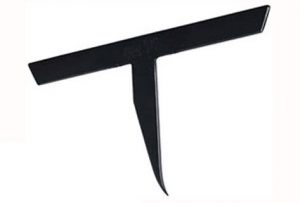Even with the innovation of pneumatic roofing nail guns, hammers are still necessary in roofing. There are many different shapes and sizes of hammers available, each with different specific functions. For residential roofing, four styles of hammers are mostly used. What type you use depends on what type of roofing you are doing. Asphalt shingles, slate, tile, and cedar shingles are the most common roofing material for sloped residential roofs, and installation for these materials usually requires a hammer and fasteners.
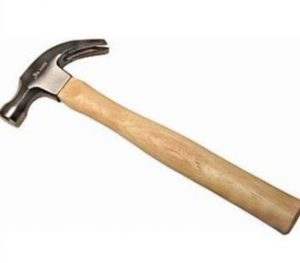
Some common hammer options include smooth face, milled face (to help grip the nail), magnetic nail holder, steel head, titanium head, wood handle, fiberglass handle, steel handle, rubber handle grip, leather handle grip, replaceable heads, etc.
Double-claw Hammer
The double-claw hammer is the most common all-around hammer used in general roofing applications. 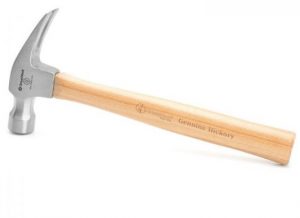 The claw is for pulling nails, or to pry wood or other materials, and can either be straight or curved. A straight claw may also be used for light demolition. A framing hammer is usually too large and unnecessary for most residential roofing work.
The claw is for pulling nails, or to pry wood or other materials, and can either be straight or curved. A straight claw may also be used for light demolition. A framing hammer is usually too large and unnecessary for most residential roofing work.
Roofing Hatchet
A roofing hatchet (small axe) is primarily used for asphalt shingle installation. The hatchet can be used for demolition.
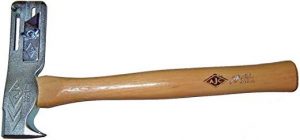
Other features roofing hatchets may have are shingle guides, built-in knife for cutting shingles, magnetic nail holder, and nail pullers.
Roofing Pick Hammer
The pick hammer includes the ability to pull nails, but has a sharpened pick instead of a double claw. 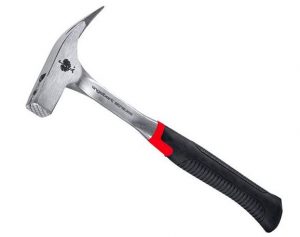 The pick can be used to punch holes in slate and other materials.
The pick can be used to punch holes in slate and other materials.
Slate Hammer
While not essential to slate repair and installation, the slate hammer makes working with slate more efficient. Features include a sharpened pick to punch nail holes, nail puller, beveled shaft to cut slates. There are different versions for left and right-handed users. A slate anvil is an accessory often used when trimming slate.
